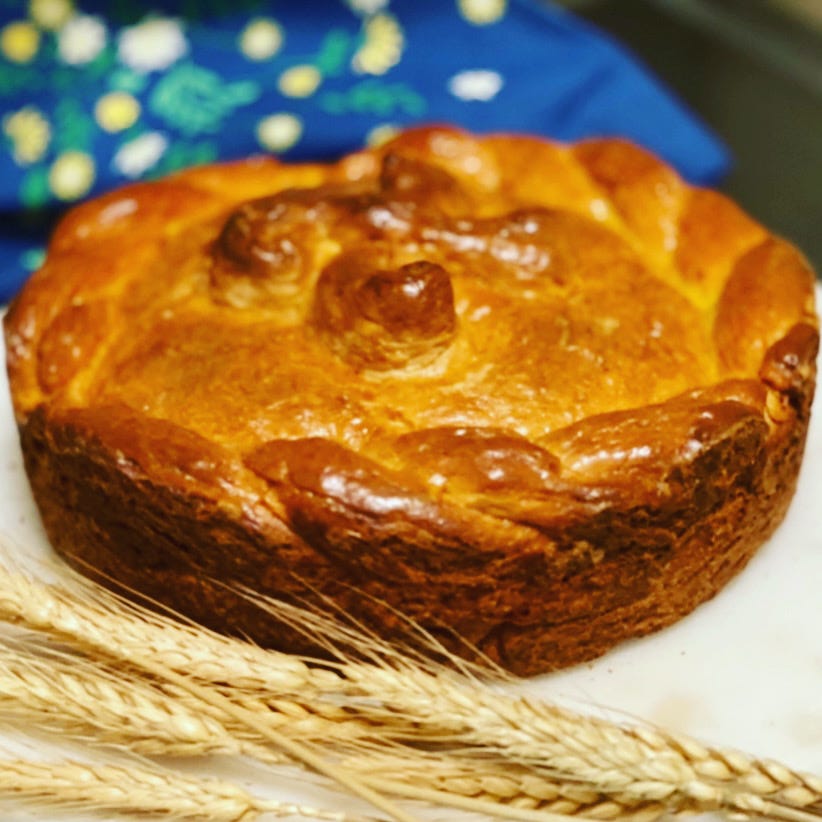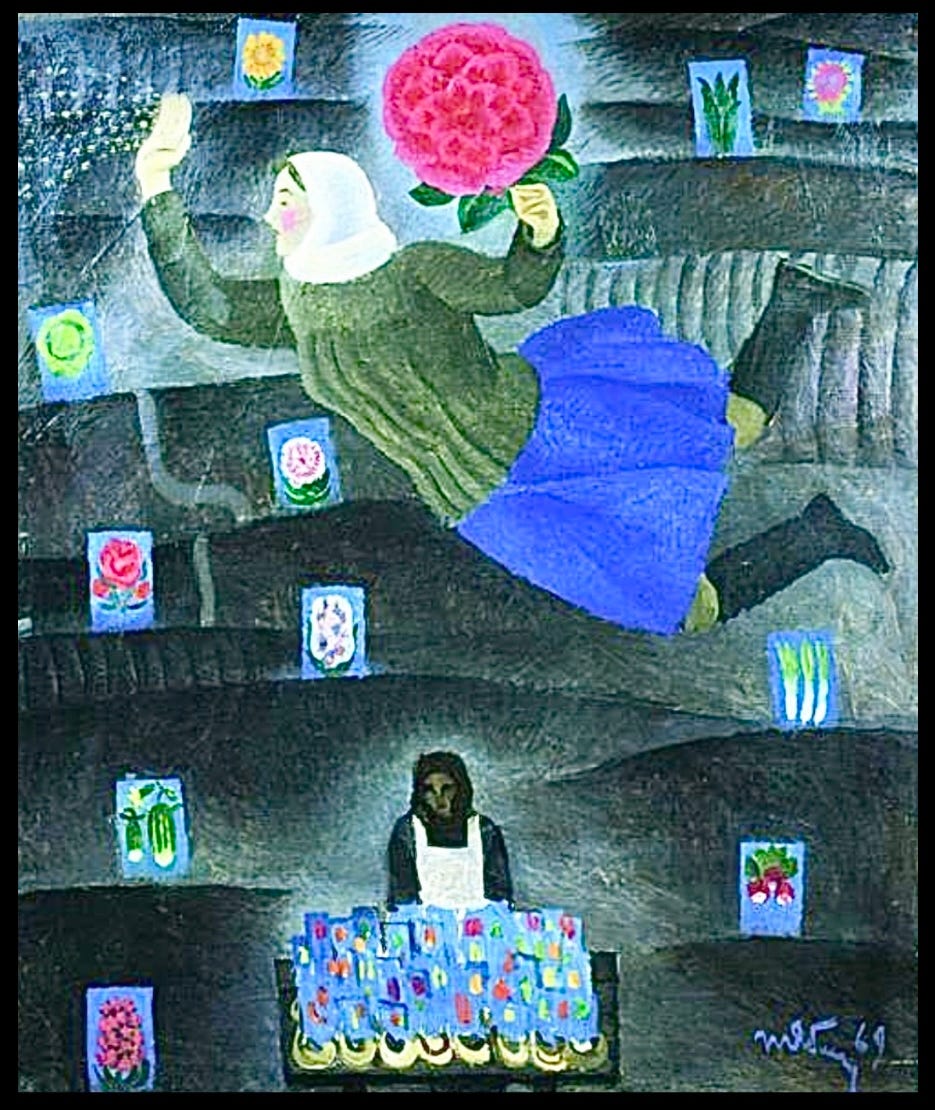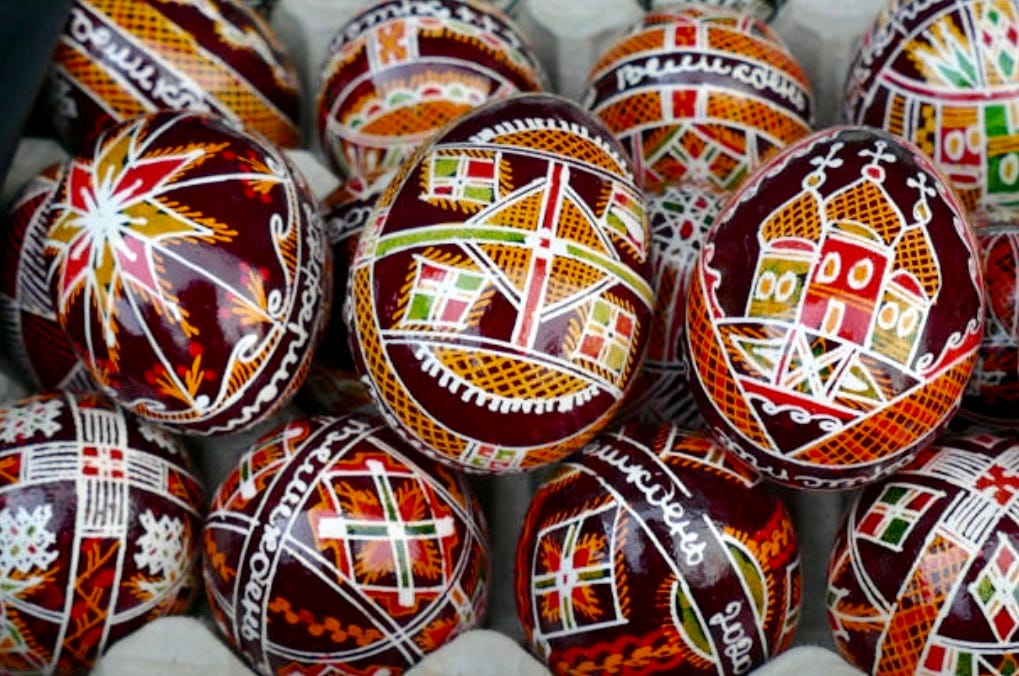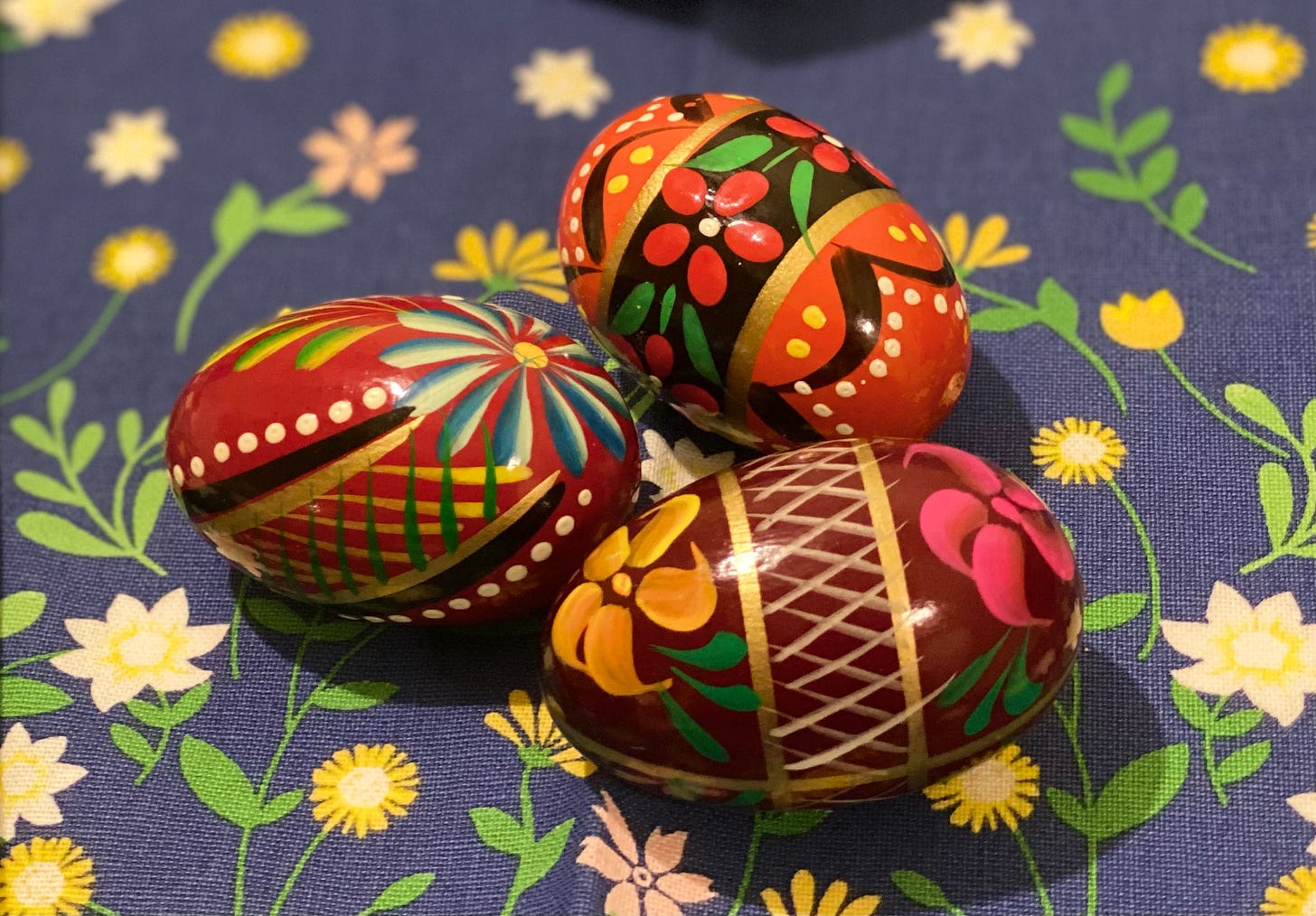On a recent Sunday afternoon in March a dozen chefs and bakers from around the world Zoomed their way into the kitchens of bakers who were also joining from countries all over the globe.
During a virtual “Bake-a-Thon for Ukraine” upwards of 25K was raised for a variety of aid organizations including World Central Kitchen.
The warm and welcoming host Jennifer Kouvant of Six Dutchess Farms in the Hudson Valley of New York State greeted all of us in the worldwide audience on behalf of the participating chefs. For the next close to five hours, Jennifer skillfully spirited us through time zones and countries where every beautiful dish was baked and presented with inspiring skill, heart and enthusiasm.
One of the stops on this whirlwind day was Austin, Texas where Chef David Norman of Easy Tiger Bake Shop and Beer Garden made the beautiful, ancient Ukrainian Easter bread, Paska and he has graciously shared his recipe with us.
Ukraine follows the Eastern Orthodox calendar and Easter is on April 24th this year. Paska is the centerpiece of a basket filled with sausage, cheese, butter, salt and the beautiful and intricately decorated eggs called Pysanky (see photos and link at end of this newsletter for a terrific article about their history) along with willow switches and daffodils, all covered in an embroidered cloth and brought to church to be blessed on Easter morning. The basket is then taken back home to be enjoyed at Easter brunch.
As we all know, this Easter, in much of Ukraine, these beautiful traditions will not be able to happen.
But as Jennifer wrote yesterday, for this year, we will bake the Paska with Ukraine “deep in our hearts.”
Many thanks again to Chef Norman for sharing his recipe and to Jennifer and her “Bake-a-Thon for Ukraine Collective”Chef presenters: Hans, Jen, Viola, Anna, Luisa, Johanna, David, Cherie, Victoria, Linda, Melanie and Renee.
(Note: I definitely need more practice with the braiding and decorating of the dough and I’ll be buying fresh yeast and making another (my Paska, rose but I think it should be even higher) But it tasted delicious and the color is beautiful.)
Also: don’t forget to scroll to the end of the recipe to see the gorgeous Pysanky.
Paska
INGREDIENTS:
3/4 cup/180ml whole milk
Zest from one lemon
2 TBSP/30g sugar
2 tsps/8g salt
3 cups+2 TBSP/400g all purpose flour
1 TBSP/9g instant yeast
2 eggs
6 TBSP/86g room temperature butter
A beaten egg for egg wash
INSTRUCTIONS:
Scald the milk, set aside and let cool.
Zest the lemon and add to the sugar. Stir together and add the salt.
Add the flour and the yeast to the bowl of a stand mixer.
When the milk has cooled, add it and the eggs to the flour and yeast and begin to combine on low speed using the dough hook.
When the liquids are incorporated into the flour, add the sugar, salt and zest mix. Continue mixing on low speed until well combined. Increase the speed of the mixture and knead the dough until it starts to pull away from the sides of the bowl (about 5-8 minutes)
Reduce the mixer speed and add the butter. Mix until well incorporated, then increase mixer speed again for about 30 seconds.
Form the dough into a smooth ball and return to the mixing bowl. Cover and let rise in a warm area for about an hour.
Refrigerate the dough for two hours or up to overnight. The bread can be shaped without refrigerating, but the cold dough is easier to shape, especially the decorations.
Divide the dough into 2 parts, the second part should be about a third of the dough.
Spray an 8” x 3” high cake pan with cooking spray (I didn’t have on hand, so I greased the pan with butter and the Paska came right out)
Shape the larger piece of the dough into a ball and place it seam down in the center of the pan.
Divide the smaller piece of dough into 4 equal pieces. Shape 3 of the pieces into ropes about 18” long. (Note: I divided the dough into 3 pieces and formed 2 of them into 18” inch ropes and made a twine rather than a braid)
Divide the remaining piece in 2 and form into two 12” ropes.
Press the ball of dough in the cake pan flat so it fills the bottom of the pan. You may have to let it rest and then press down again depending how tightly you formed the ball. Egg wash the dough.
Braid the three longer strands of dough together and place in circle around the pan.
For the two shorter strands, coil in the ends to form a sort of “S” shape.
Place the two coiled “S” strands in the center, overlapping to form a cross. Egg wash the braid and the cross.
Cover the pan with a tea towel or plastic wrap (make sure the plastic doesn’t touch the dough.)
Place somewhere warm to rise. If dough was refrigerated, it could take 2-3 hours (I refrigerated and it took the full three hours) if shaped directly, 1-1 1/2 hours.
Pre-heat the oven to 325F. When the cake has risen to nearly the top of the pan, bake the loaf in the center of the oven for about 40 minutes or until deep brown (mine took closer to 50 min to get the color I wanted and the inside was not dried out)
Let cool in the pan for 5 minutes, then turn out onto a cooling rack and cool completely.
I hope you enjoy.
Wishing a Happy Easter and Passover to all who are celebrating this weekend.
Jolene
Here is a Link to learn more about Pysanky:








I know this probably isn't what you meant us to think about, but suddenly, I'm thinking of the cultural impoverishment of modern life. There's just so much more love and life to all this than "microwave your hot cross buns from Tesco and serve with a packaged chocolate egg" that Easter has become in my native UK. Even in the midst of death, Ukraine is teaching us how to live. Thank you, Jolene.
As is the growing pattern, your relevant and delicious post delivered something heartwarming. <3